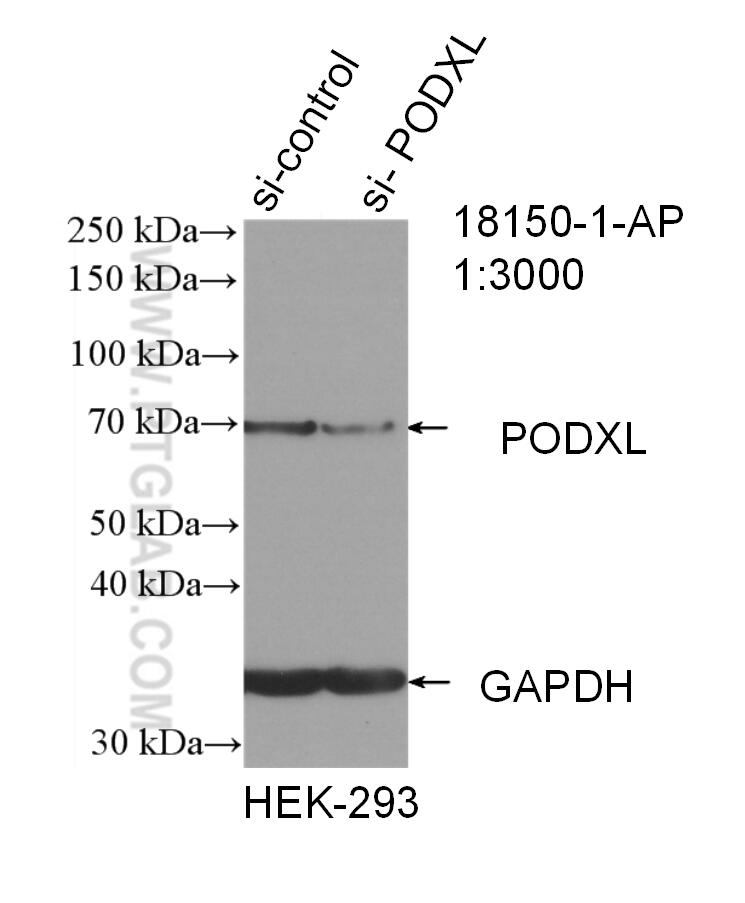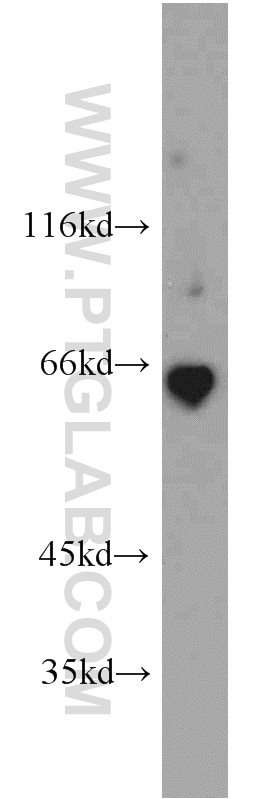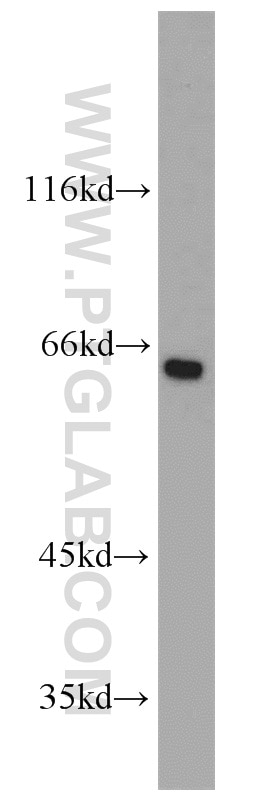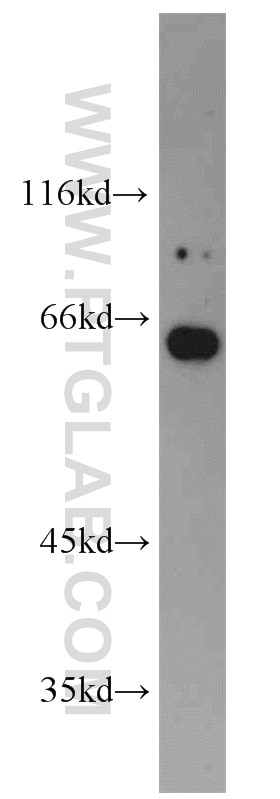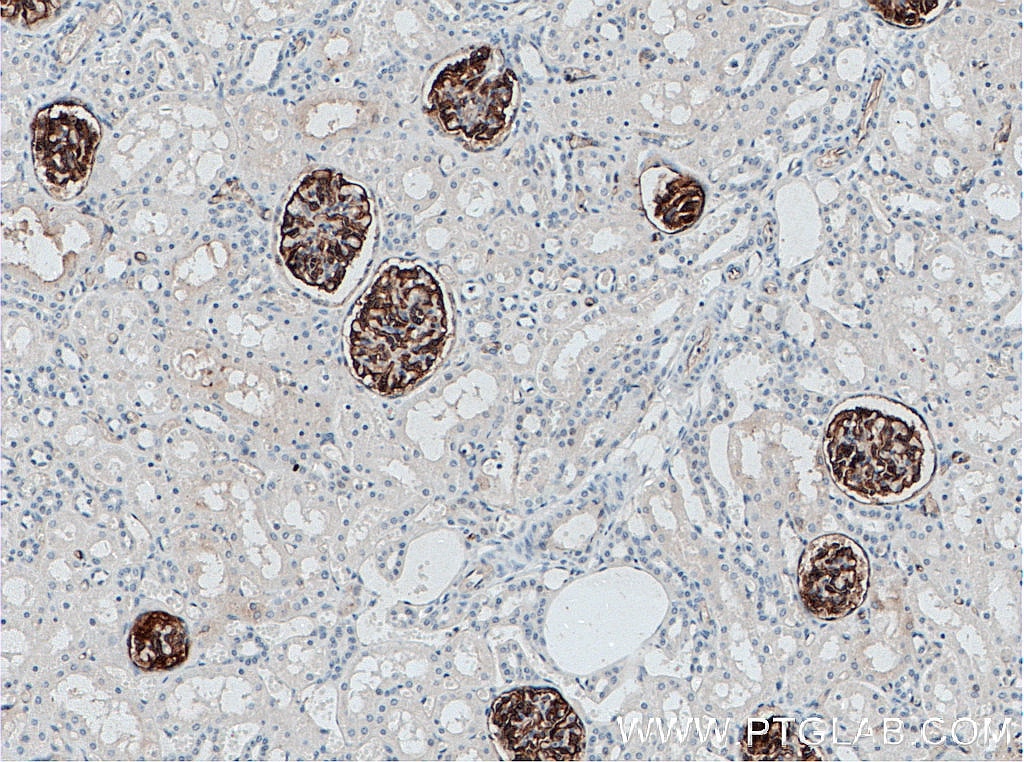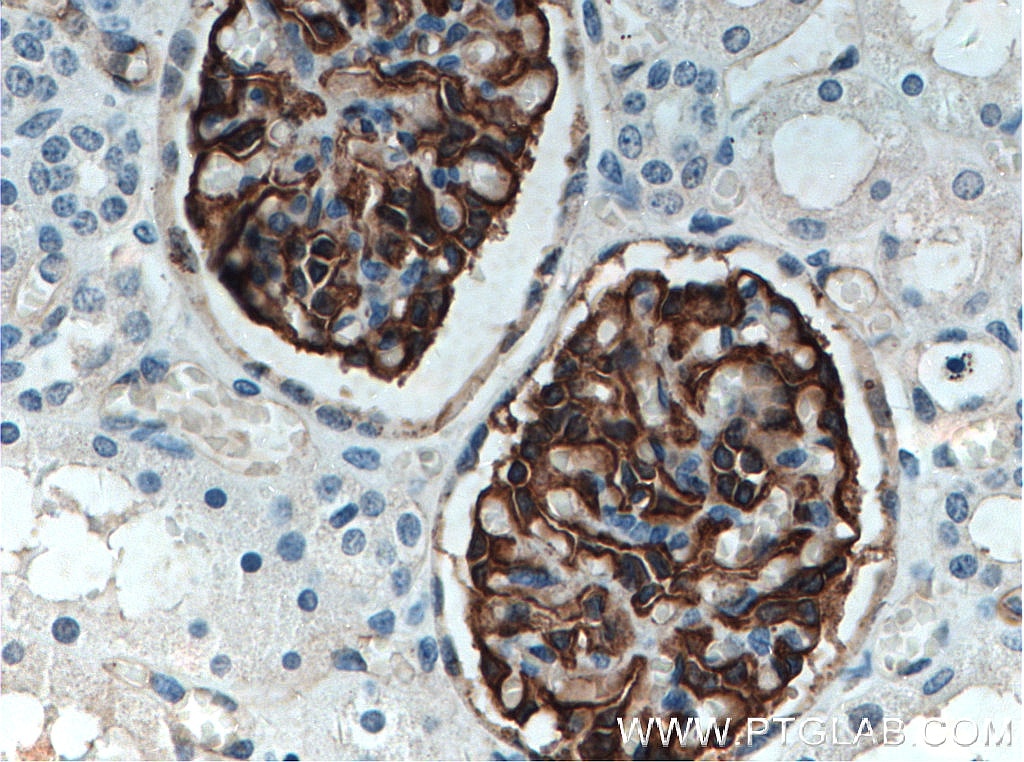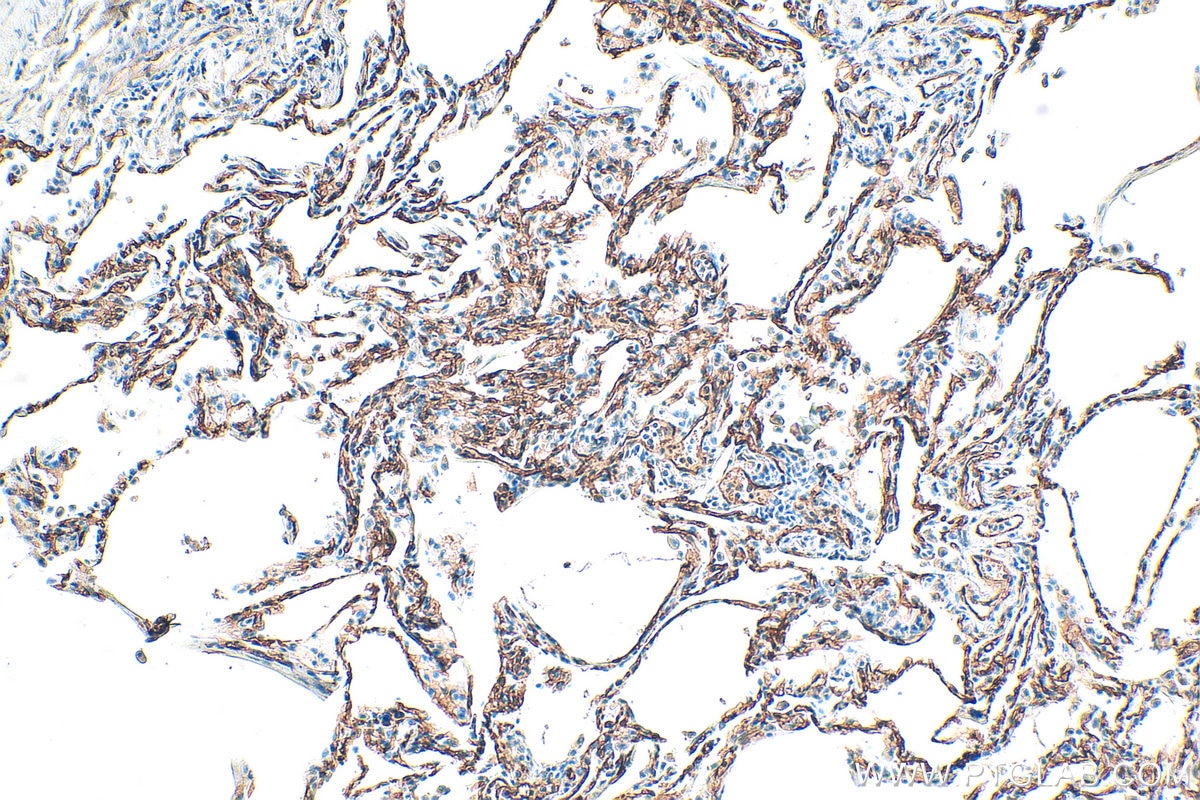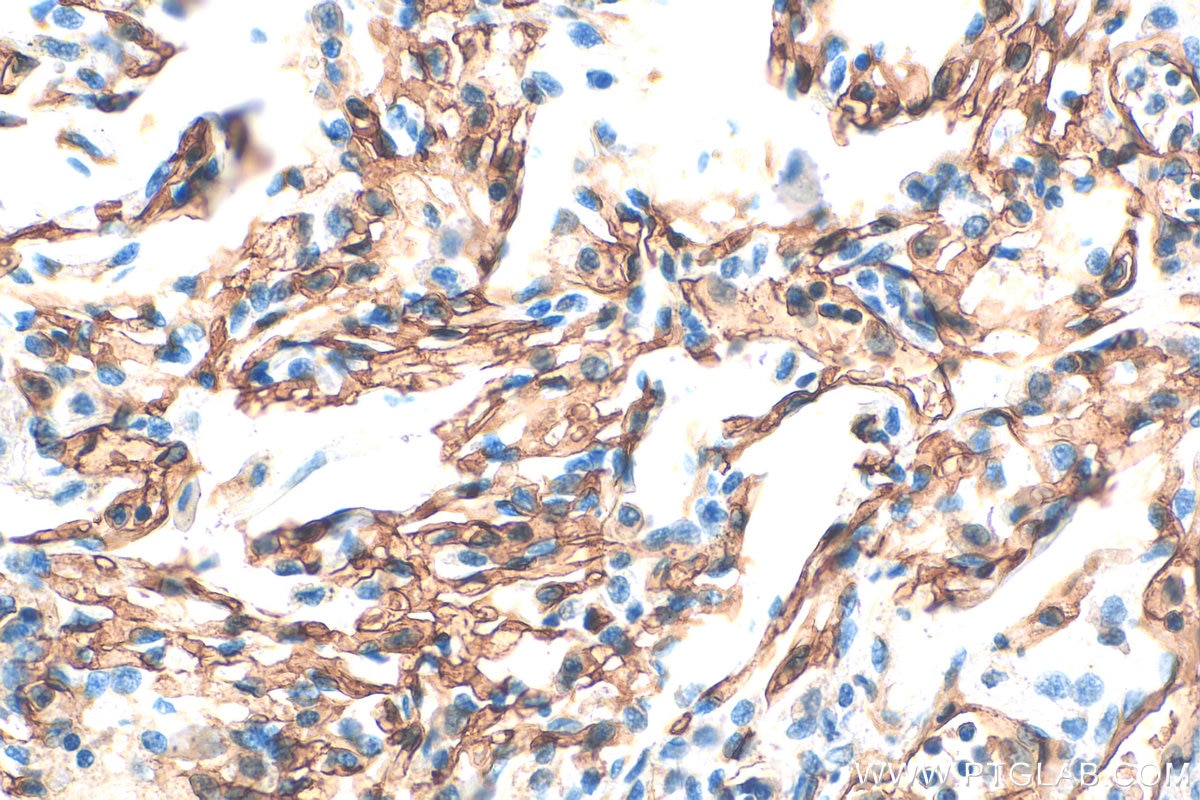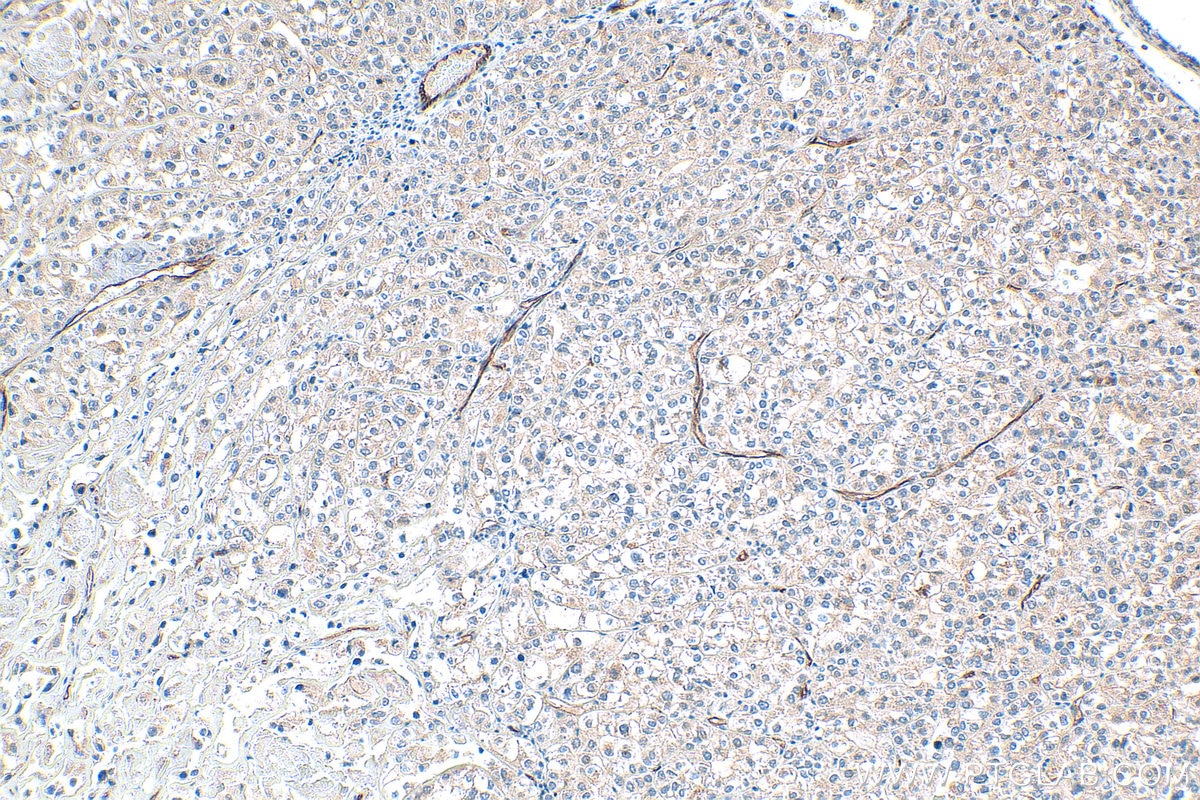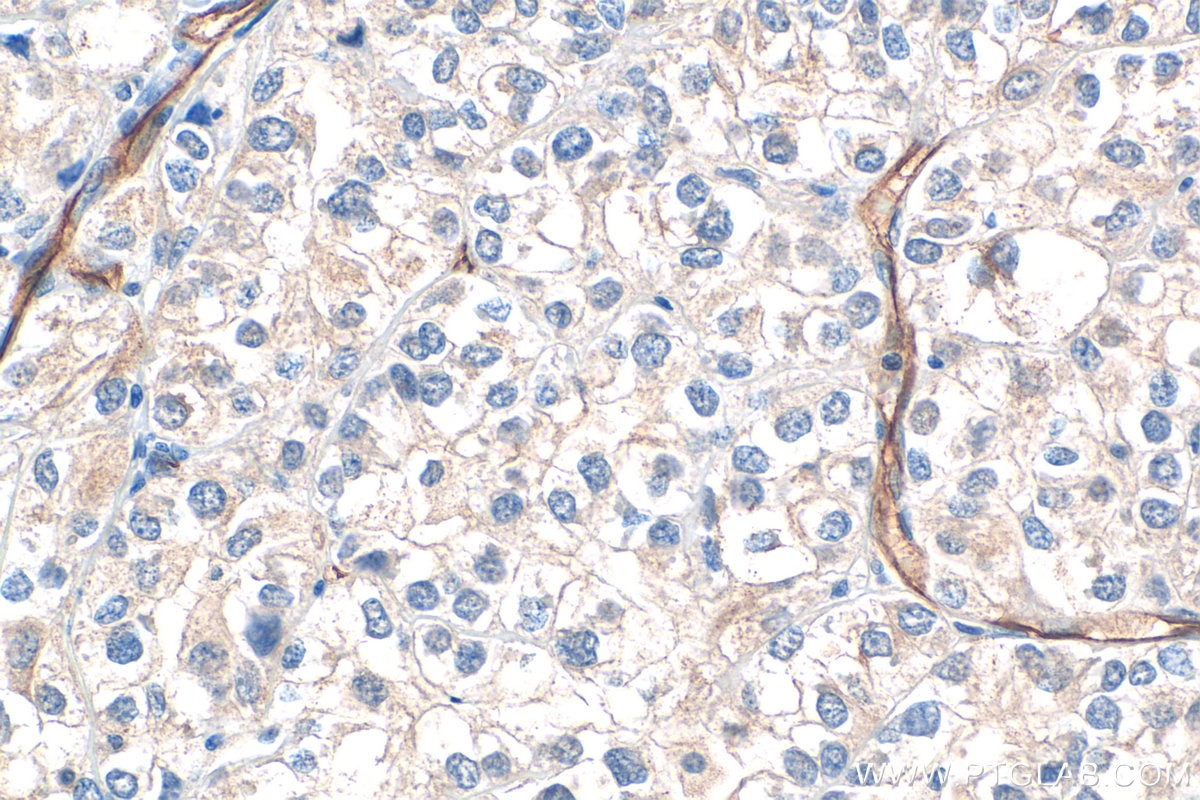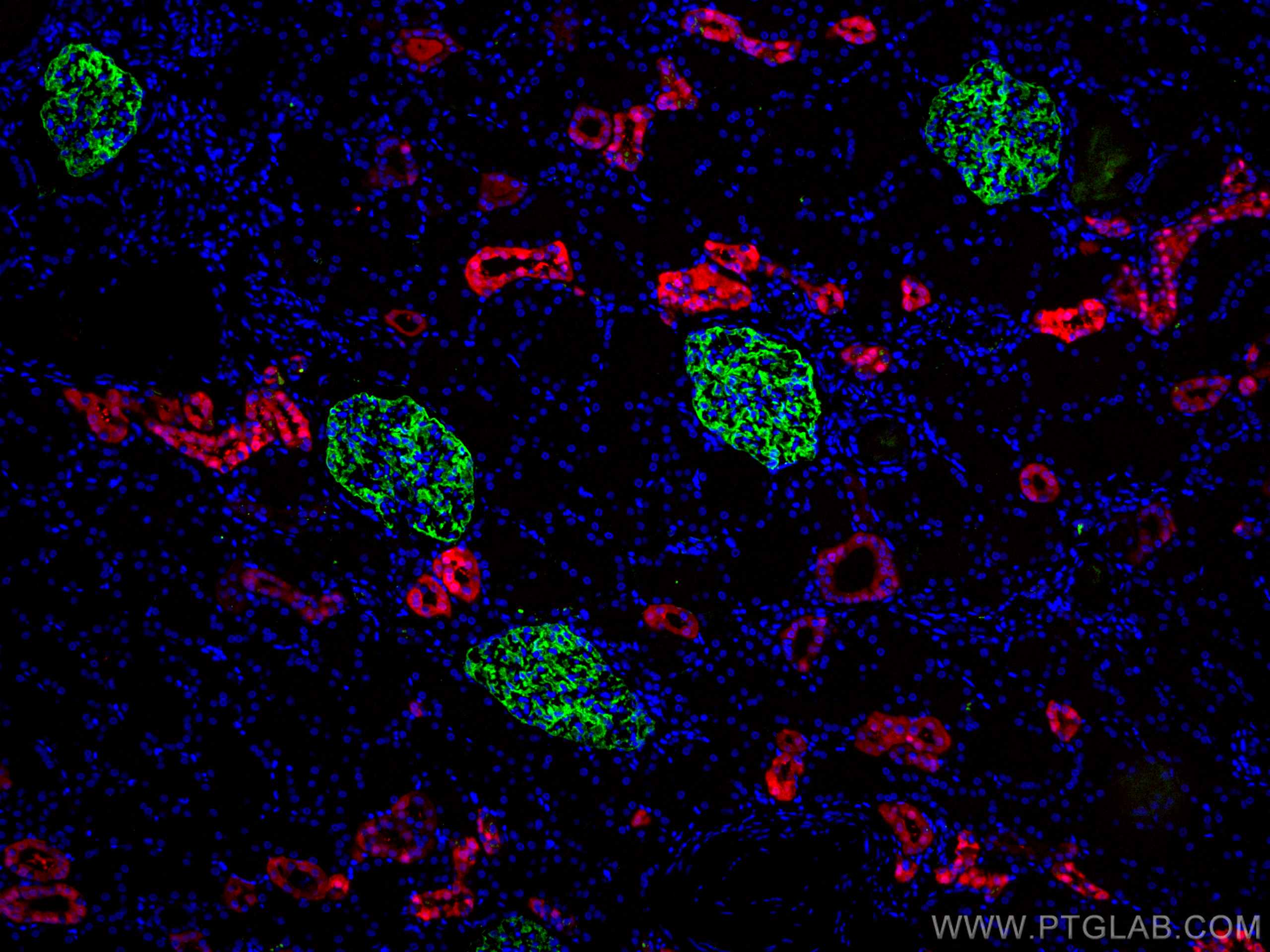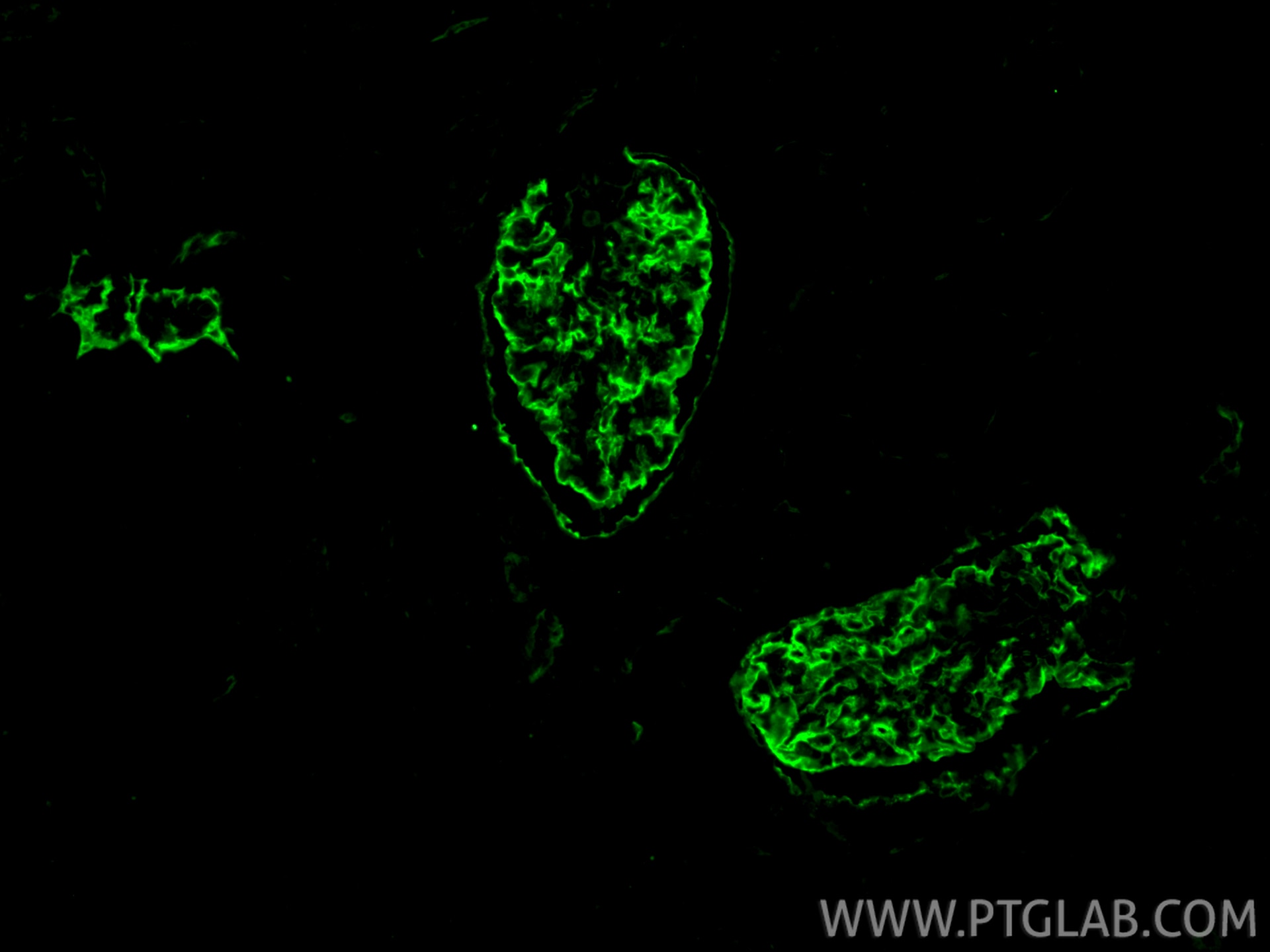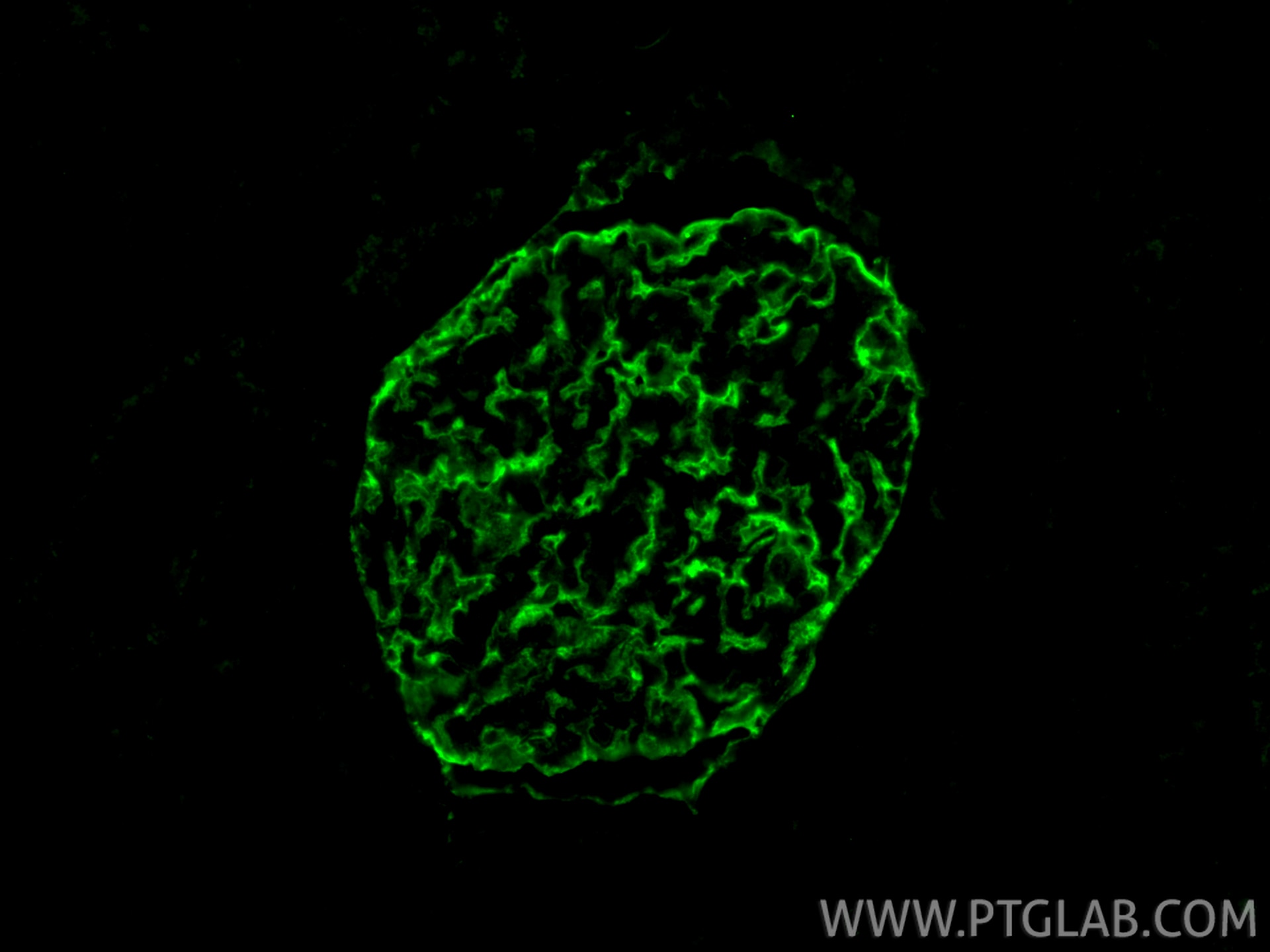- Featured Product
- KD/KO Validated
Podocalyxin Polyklonaler Antikörper
Podocalyxin Polyklonal Antikörper für WB, IHC, IF-P, ELISA
Wirt / Isotyp
Kaninchen / IgG
Getestete Reaktivität
human
Anwendung
WB, IHC, IF-P, ELISA
Konjugation
Unkonjugiert
Kat-Nr. : 18150-1-AP
Synonyme
Geprüfte Anwendungen
| Erfolgreiche Detektion in WB | humanes Nierengewebe, HEK-293-Zellen, HepG2-Zellen |
| Erfolgreiche Detektion in IHC | humanes Nierengewebe, humanes Endometriumkarzinomgewebe, humanes Lungengewebe Hinweis: Antigendemaskierung mit TE-Puffer pH 9,0 empfohlen. (*) Wahlweise kann die Antigendemaskierung auch mit Citratpuffer pH 6,0 erfolgen. |
| Erfolgreiche Detektion in IF-P | humanes Nierengewebe |
Empfohlene Verdünnung
| Anwendung | Verdünnung |
|---|---|
| Western Blot (WB) | WB : 1:500-1:1000 |
| Immunhistochemie (IHC) | IHC : 1:500-1:4000 |
| Immunfluoreszenz (IF)-P | IF-P : 1:400-1:1600 |
| It is recommended that this reagent should be titrated in each testing system to obtain optimal results. | |
| Sample-dependent, check data in validation data gallery | |
Veröffentlichte Anwendungen
| KD/KO | See 1 publications below |
| WB | See 8 publications below |
| IF | See 5 publications below |
Produktinformation
18150-1-AP bindet in WB, IHC, IF-P, ELISA Podocalyxin und zeigt Reaktivität mit human
| Getestete Reaktivität | human |
| In Publikationen genannte Reaktivität | human |
| Wirt / Isotyp | Kaninchen / IgG |
| Klonalität | Polyklonal |
| Typ | Antikörper |
| Immunogen | Podocalyxin fusion protein Ag12844 |
| Vollständiger Name | podocalyxin-like |
| Berechnetes Molekulargewicht | 526 aa, 55 kDa |
| Beobachtetes Molekulargewicht | 60-70 kDa |
| GenBank-Zugangsnummer | BC093730 |
| Gene symbol | Podocalyxin |
| Gene ID (NCBI) | 5420 |
| Konjugation | Unkonjugiert |
| Form | Liquid |
| Reinigungsmethode | Antigen-Affinitätsreinigung |
| Lagerungspuffer | PBS with 0.02% sodium azide and 50% glycerol |
| Lagerungsbedingungen | Bei -20°C lagern. Nach dem Versand ein Jahr lang stabil Aliquotieren ist bei -20oC Lagerung nicht notwendig. 20ul Größen enthalten 0,1% BSA. |
Hintergrundinformationen
Podocalyxin, also known as podocalyxin-like protein 1 (PODXL or PCLP1), is a transmembrane glycoprotein belonging to the CD34 family of sialomucins. Podocalyxin was originally identified as the major sialoprotein on podocytes of the kidney glomerulus but was later found to be expressed on vascular endothelial cells and early hematopoietic progenitors. It is involved in the regulation of both adhesion and cell morphology. In addition, podocalyxin is highly expressed in embryonic stem cells and aberrant expression of podocalyxin has been implicated in a wide range of cancers. Podocalyxin is a protein with a peptide bone of ∼55.5 kDa that undergoes a post‐translational glycosylation, the different molecular mass of podocalyxin indicates the extent and variability of glycosylation patterns (PMID: 17092254).
Protokolle
| PRODUKTSPEZIFISCHE PROTOKOLLE | |
|---|---|
| WB protocol for Podocalyxin antibody 18150-1-AP | Protokoll herunterladen |
| IHC protocol for Podocalyxin antibody 18150-1-AP | Protokoll herunterladenl |
| IF protocol for Podocalyxin antibody 18150-1-AP | Protokoll herunterladen |
| STANDARD-PROTOKOLLE | |
|---|---|
| Klicken Sie hier, um unsere Standardprotokolle anzuzeigen |
Publikationen
| Species | Application | Title |
|---|---|---|
Kidney Int Quantitative assessment of glomerular basement membrane collagen IV α chains in paraffin sections from patients with focal segmental glomerulosclerosis and Alport gene variants | ||
Dis Model Mech Ascorbate protects human kidney organoids from damage induced by cell-free hemoglobin | ||
Tissue Eng Part A Genome engineering of human urine-derived stem cells to express lactoferrin and deoxyribonuclease | ||
Int J Cardiol Brg1 deficiency in vascular endothelial cells blocks neutrophil recruitment and ameliorates cardiac ischemia-reperfusion injury in mice. | ||
